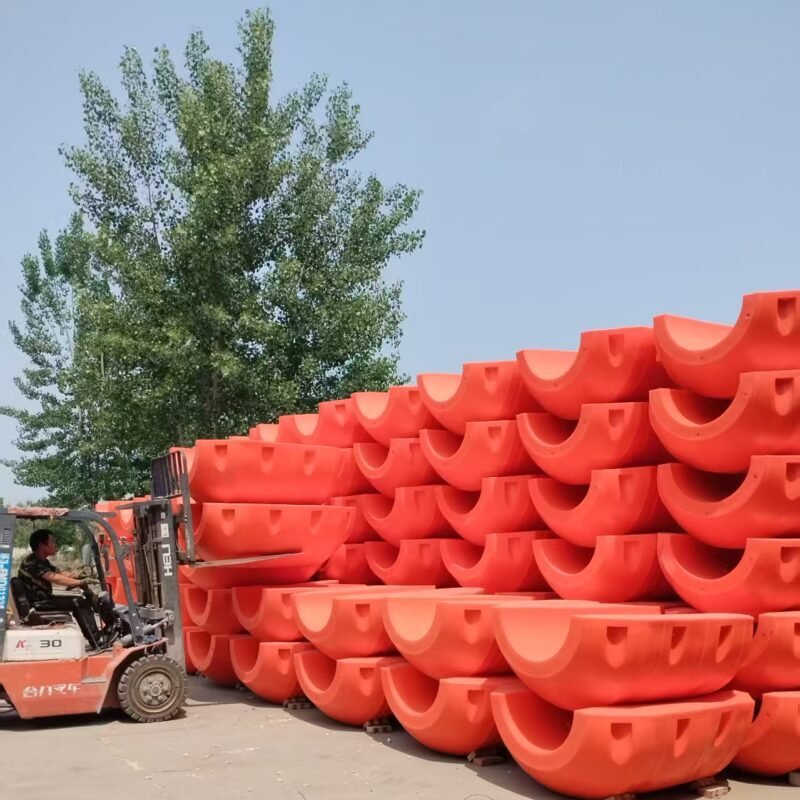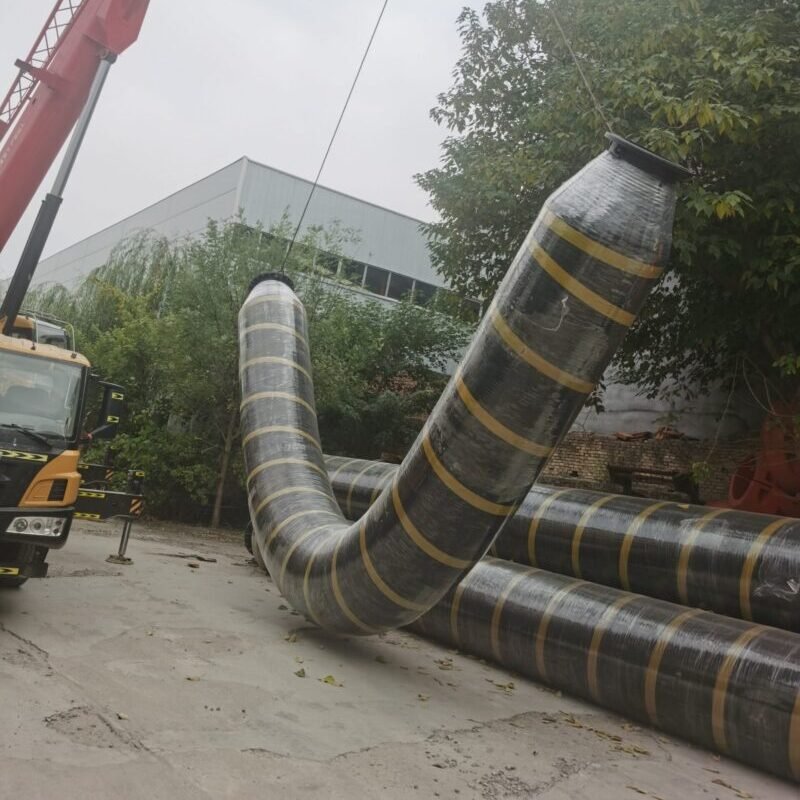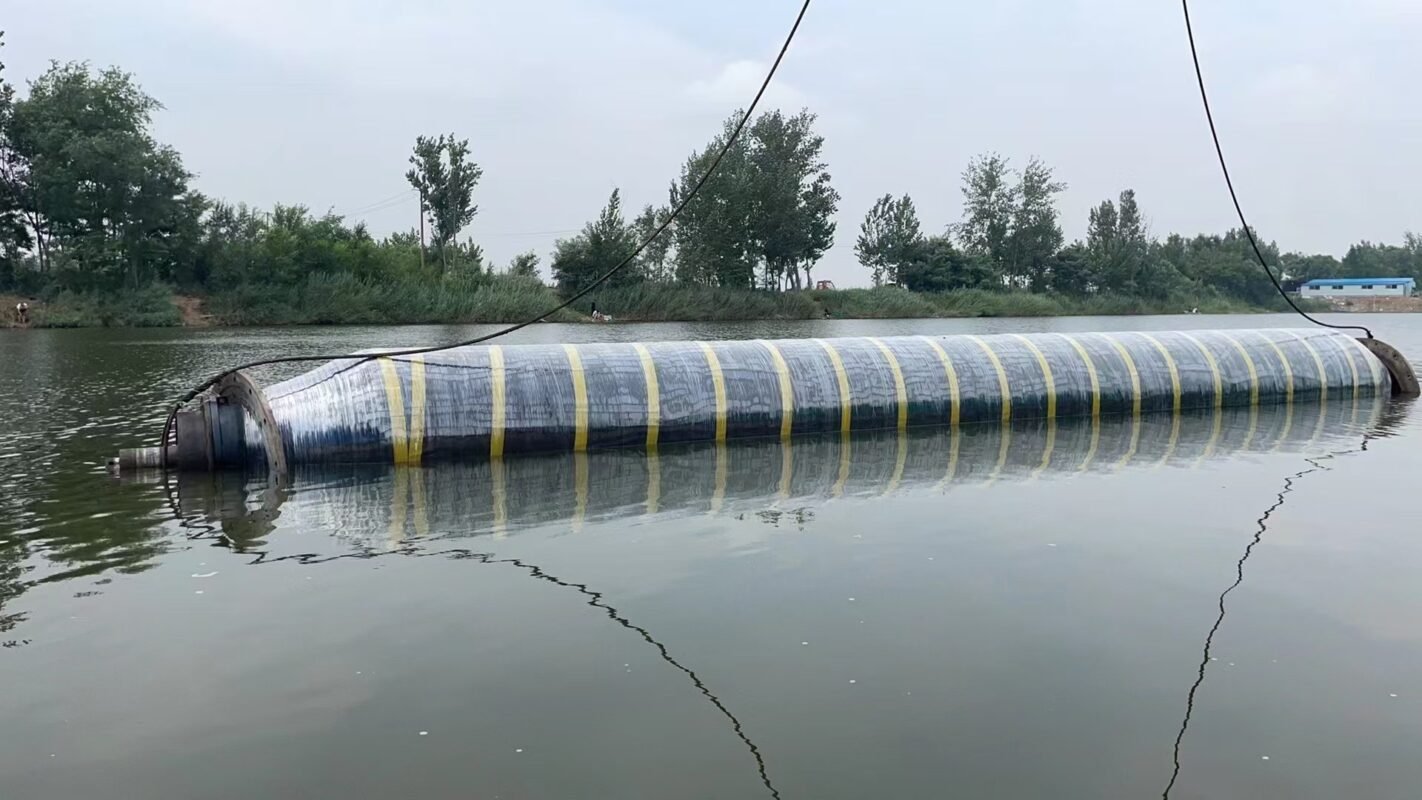Dredging Submerged Hose

Underwater dredging rubber pipes are special hoses designed for the suction or transportation of underwater materials such as silt, sediment, and gravel. These pipes are characterized by their wear resistance, corrosion resistance, and compression resistance, and are widely applied in river dredging, port dredging, and submarine mining operations. Below is the key information about underwater dredging rubber pipes:
Main Features:High Wear Resistance: The inner layer is made of highly wear-resistant rubber materials, such as natural rubber, styrene-butadiene rubber, or polyurethane, enabling it to withstand the long-term erosion caused by silt and gravel.Water Pressure Resistance: The reinforcement layer is typically woven or wrapped with high-strength fibers or steel wires. This layer is crucial for withstanding the external pressure and negative suction pressure when the pipes operate underwater.Good Flexibility: These pipes can be bent to adapt to the movement of ships or excavation equipment, effectively preventing rupture due to water flow impacts.Corrosion Resistance: The outer rubber layer contains anti-aging and seawater corrosion-resistant components, making the pipes suitable for both seawater and freshwater environments.Buoyancy Design: Some pipes are equipped with buoyancy devices, such as floats, to prevent sinking or entanglement.
Typical Structure:Inner Rubber Layer: Composed of ultra-wear-resistant rubber, this layer has a smooth surface to reduce material adhesion.
Reinforcement Layer: Constructed with multiple layers of polyester fibers or steel wires, it provides the necessary tensile and compressive strength.Outer Rubber Layer: Made of UV-resistant and weather-resistant rubber, it protects the pipe from mechanical damage and chemical corrosion.Optional Accessories: Flange joints, quick connectors, buoyancy rings, and other accessories are available as needed.
Application Scenarios:River/Lake Silt Dredging: Used to remove sedimentary deposits and improve water quality.Port/Waterway Maintenance: Employed for dredging underwater silt to ensure smooth navigation.Submarine Mining: Facilitates the transportation of mineral particles or tailings.Emergency Rescue: Useful in cleaning up silt and sand after floods and other disasters.

Key Considerations for Selection:Pipe Diameter: Select the appropriate diameter based on the flow requirements, with common diameters ranging from 100mm to 1000mm.Working Pressure: Differentiate between suction-type (negative pressure) and conveying-type (positive pressure) pipes according to the application.Media Characteristics: Choose the suitable pipe material based on the particle size and acidity of the conveyed media.Ambient Temperature: In extremely low-temperature environments, pipes made of cold-resistant rubber, such as nitrile rubber, should be selected.
Precautions:Periodic Inspection: Regularly check for wear, perforations, or leakage at the joints to ensure safe operation.Avoid Excessive Bending: Prevent excessive bending to avoid damage to the reinforcement layer.Equipment Compatibility: Ensure that the pipes are compatible with the pressure parameters of related equipment, such as pumps and dredging vessels.





